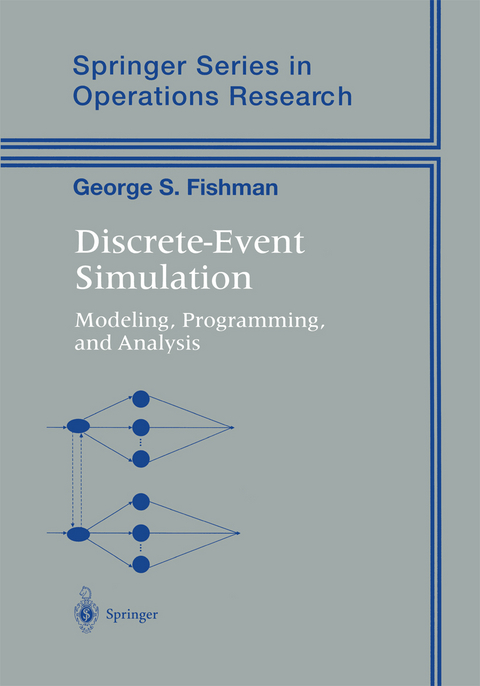
Discrete-Event Simulation
Modeling, Programming, and Analysis
Seiten
2001
Springer-Verlag New York Inc.
978-0-387-95160-7 (ISBN)
Springer-Verlag New York Inc.
978-0-387-95160-7 (ISBN)
Discrete-event simulation consists of a collection of techniques that when applied to a discrete-event dynamical system, generates sequences called sample paths that characterize its behavior. The collection includes modelling concepts for abstracting the essential features of a system, using specially designed software for converting these relationships into computer executable code capable of generating the requisite sample-path data; outlining procedures for converting these data into estimates of systems performances; and then illustrating methods for assessing how well these estimates approximate true, but unknown system behavior.
This book is intended for upper level undergraduate and graduate students in operations research and management science, mathematics, industrial engineering, computer science, and business and features extensive exercises throughout. This concept of modelling complex sytems allows a relatively low-cost way of gathering information for decision-making.
Principally offered are four problems for student exercises; each is progressively brought forward through the modelling, programming, and analysis chapters, providing continuity to the learning process.
This book is intended for upper level undergraduate and graduate students in operations research and management science, mathematics, industrial engineering, computer science, and business and features extensive exercises throughout. This concept of modelling complex sytems allows a relatively low-cost way of gathering information for decision-making.
Principally offered are four problems for student exercises; each is progressively brought forward through the modelling, programming, and analysis chapters, providing continuity to the learning process.
1 Simulation in Perspective.- 2 Modeling Concepts.- 3 Data Collection and Averages.- 4 Programming and Execution.- 5 Search, Space, and Time.- 6 Output Analysis.- 7 Making Sense of Output and Increasing Efficiency.- 8 Sampling from Probability Distributions.- 9 Pseudorandom Number Generation.- 10 Preparing the Input.- Appendix More on the Batch-Means Method.- A.1 FNB Rule (Section 6.6.4).- A.2 SQRT Rule (Section 6 6 5).- Author Index.
| Reihe/Serie | Springer Series in Operations Research and Financial Engineering |
|---|---|
| Zusatzinfo | 50 Illustrations, black and white; XIX, 537 p. 50 illus. |
| Verlagsort | New York, NY |
| Sprache | englisch |
| Maße | 178 x 235 mm |
| Themenwelt | Informatik ► Grafik / Design ► Digitale Bildverarbeitung |
| Mathematik / Informatik ► Informatik ► Theorie / Studium | |
| Mathematik / Informatik ► Mathematik ► Angewandte Mathematik | |
| Mathematik / Informatik ► Mathematik ► Wahrscheinlichkeit / Kombinatorik | |
| Wirtschaft ► Allgemeines / Lexika | |
| ISBN-10 | 0-387-95160-1 / 0387951601 |
| ISBN-13 | 978-0-387-95160-7 / 9780387951607 |
| Zustand | Neuware |
| Haben Sie eine Frage zum Produkt? |
Mehr entdecken
aus dem Bereich
aus dem Bereich
Modelle für 3D-Druck und CNC entwerfen
Buch | Softcover (2022)
dpunkt (Verlag)
34,90 €
alles zum Drucken, Scannen, Modellieren
Buch | Softcover (2024)
Markt + Technik Verlag
24,95 €


